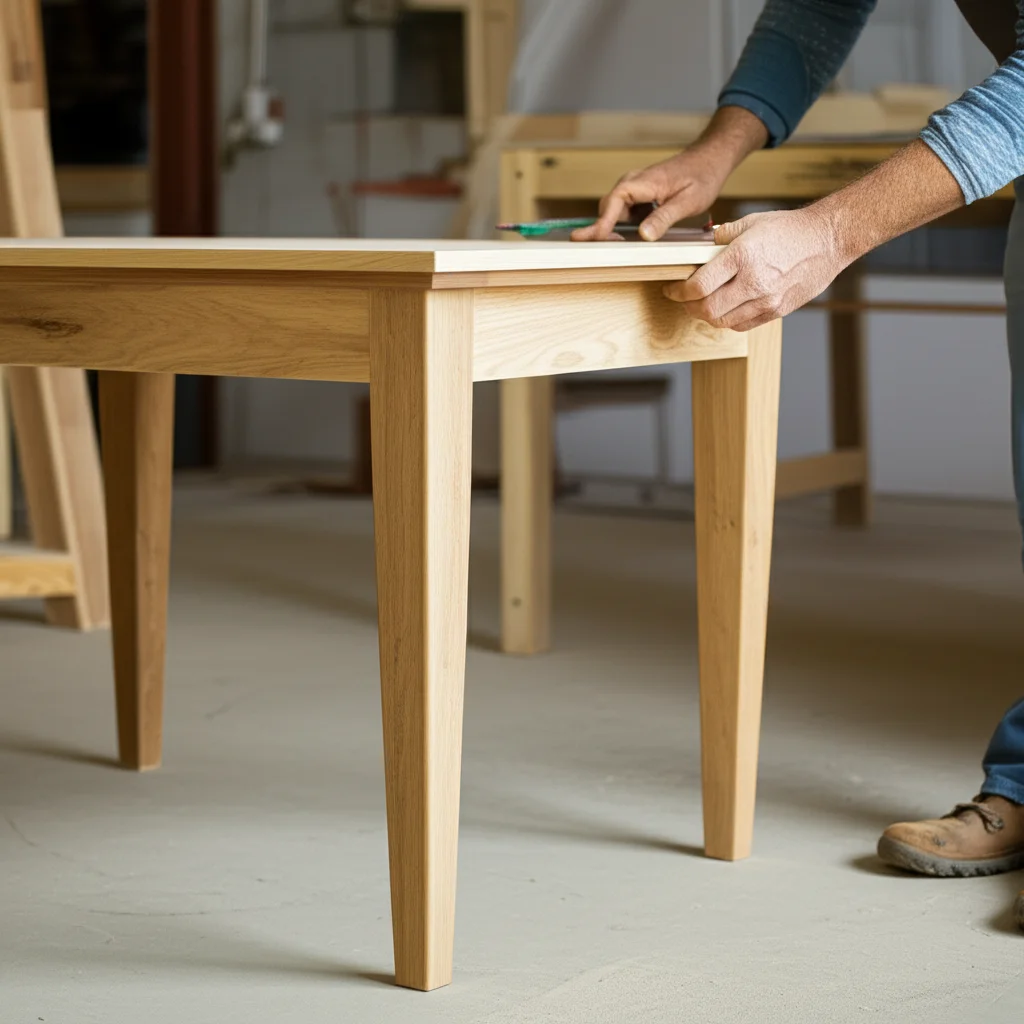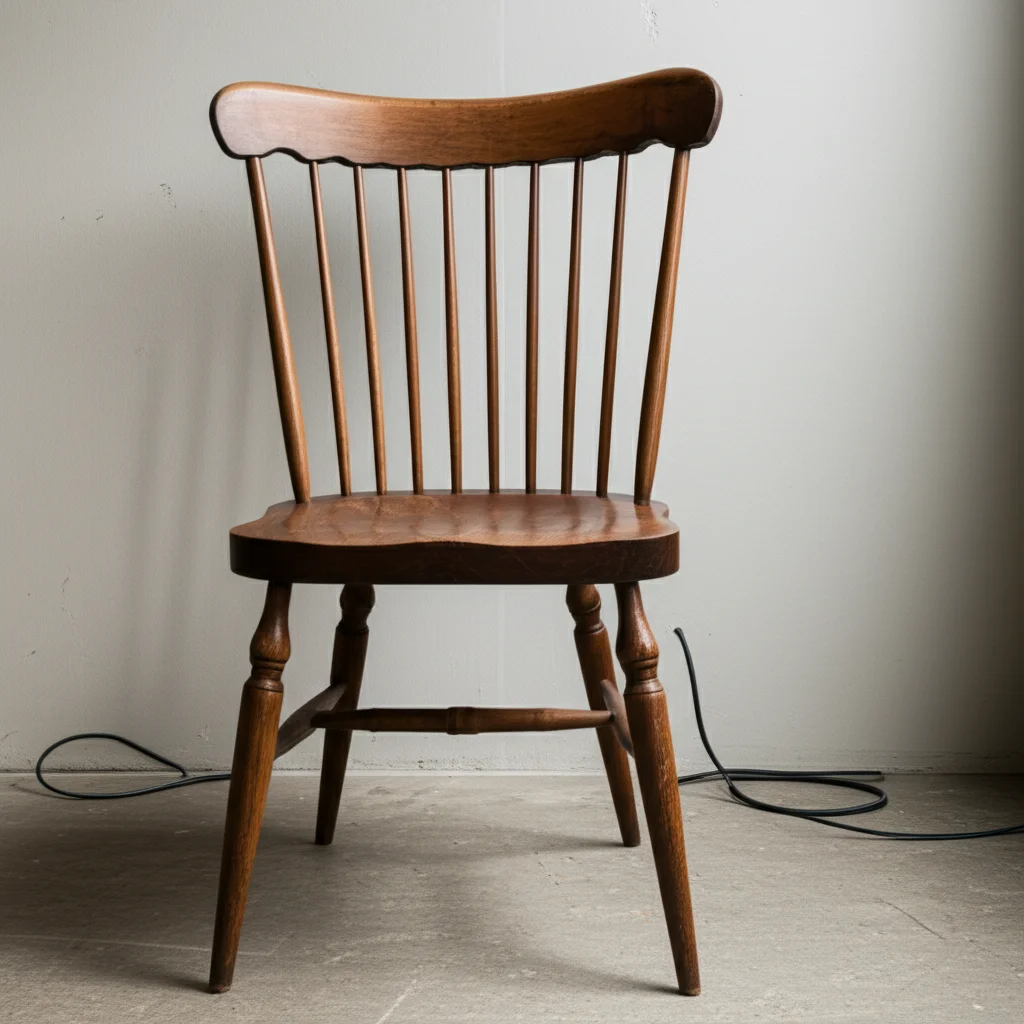· Todd Martin · Furniture Restoration · 14 min read
How To Use White Wax On Furniture

How To Use White Wax On Furniture: A Complete Guide
Are you ready to give your old furniture a stunning new look? White wax can transform ordinary pieces into extraordinary ones. It offers a unique way to add character and a fresh, updated feel to any room. Using white wax on furniture is simpler than you might think.
This guide will show you everything you need to know. We will cover the benefits of white wax, the tools you will need, and how to prepare your furniture. You will learn the exact steps to apply white wax effectively. We will also explore different effects you can achieve, and how to care for your waxed furniture. Let’s start transforming your home.
Takeaway
- Prepare your furniture thoroughly by cleaning and sanding it.
- Apply white wax in thin, even coats using a brush or cloth.
- Work the wax into the grain or surface, then wipe back excess immediately.
- Buff the dried wax to achieve your desired sheen and enhance the finish.
- Use white wax to create distressed, limed, or soft wash effects on your furniture.
White wax transforms furniture by adding a soft, often translucent, white layer. This layer enhances details, creates a distressed look, or offers a limed finish. You apply it over a clean, sometimes painted, surface. Then, you buff it to achieve the desired aesthetic and provide a protective seal.
Why Choose White Wax for Your Furniture?
White wax is more than just a protective topcoat; it is a design tool. It can drastically change the appearance of your furniture, giving it a soft, aged, or contemporary vibe. Many people choose white wax for its ability to create specific aesthetic effects. It is a fantastic option for various decorating styles.
This versatile finish is perfect for achieving a popular shabby chic or farmhouse style. It softens dark wood and adds a rustic charm to painted pieces. White wax can also create a beautiful coastal or Scandinavian look. It helps highlight the natural grain of wood, making it appear ‘limed’ or whitewashed. This gives your furniture a light and airy feel.
Beyond aesthetics, white wax provides a good level of protection. It seals the surface of your furniture, whether it’s raw wood or a painted finish. This protection helps guard against minor scratches and spills. It also makes your furniture easier to clean and maintain over time. Using wax helps preserve the piece for years to come.
Finally, white wax is relatively easy to apply, even for beginners. It does not require special equipment or extensive training. The application process is forgiving, allowing you to build up layers or wipe back excess as needed. This makes it a popular choice for DIY furniture makeovers. It offers stunning results with minimal fuss.
Essential Tools and Materials for White Wax Application
Starting a furniture waxing project requires the right supplies. Having everything ready before you begin makes the process smoother. The good news is that you likely have many of these items already. You can gather the rest at any local hardware or craft store.
First, you will need the white wax itself. There are many brands available, each with slightly different consistencies and finishes. Choose a wax specifically designed for furniture. Some waxes are softer, while others are harder, influencing ease of application and final durability.
Next, you will need tools for applying the wax. A dedicated wax brush is ideal for getting wax into crevices and carved details. However, a lint-free cloth, like an old T-shirt or cheesecloth, works well for smooth surfaces. You will also need several clean, soft rags for buffing the wax later.
For preparation, gather some sandpaper in various grits, such as 120-grit for initial smoothing and 220-grit for finer work. A mild cleaner, like dish soap and water, is essential for cleaning the furniture. Finally, have a drop cloth ready to protect your work area. Mineral spirits can be useful for cleaning brushes or correcting mistakes.
Here is a simple checklist of essential items:
- White Furniture Wax: Choose a reputable brand suitable for your project.
- Wax Brush: A round, natural bristle brush is excellent for application.
- Lint-Free Cloths: For applying and wiping back excess wax.
- Clean Soft Rags: Essential for buffing the dried wax to a sheen.
- Sandpaper: 120-grit and 220-grit for surface preparation.
- Mild Cleaner: Dish soap and water, or a specialized furniture cleaner.
- Drop Cloth: To protect your floor or work surface.
- Mineral Spirits: For cleanup and, if needed, correcting too much wax.
- Gloves: To protect your hands during the process.
Having these materials on hand ensures a successful and enjoyable waxing experience.
Preparing Your Furniture for White Wax
Proper preparation is the most critical step when you use white wax on furniture. The final look and durability of your wax finish depend heavily on how well you prepare the surface. Skipping this stage can lead to an uneven finish, poor adhesion, or a less durable coating. You want your white wax to look fantastic and last a long time.
Begin by giving your furniture a thorough cleaning. Remove all dirt, dust, grease, and grime. A simple solution of mild dish soap and water often works perfectly. Use a clean cloth to wipe down the entire piece. Make sure you get into all the nooks and crannies. Rinse the surface with a damp cloth to remove soap residue and let it dry completely. A clean surface ensures the wax adheres properly. Read more about Preparing Furniture for a New Finish.
Next, consider sanding the surface. If your furniture has a glossy finish, light sanding with 120-grit sandpaper will create a “tooth” for the wax to grip onto. For raw wood, a light sanding with 220-grit sandpaper will smooth the surface and open the grain, which is perfect for a limed effect. Always sand in the direction of the wood grain. After sanding, wipe away all dust with a tack cloth or a damp rag.
If you are applying white wax over painted furniture, ensure the paint is fully cured. Chalk paint, for instance, is often waxed. Make sure the paint is dry to the touch and has had adequate time to harden. Some paints need a few days to cure before waxing. Check the paint manufacturer’s recommendations for curing times. A well-prepared surface makes all the difference in your waxing project.
Step-by-Step Guide: Applying White Wax to Furniture
Applying white wax is a straightforward process once your furniture is prepared. It is important to work in small sections. This helps you control the application and achieve an even finish. Take your time and enjoy the transformation of your furniture.
First, open your can of white wax. Use your wax brush or a lint-free cloth to scoop out a small amount. You do not need a lot of wax for each section. Remember, thin coats are always better than thick ones. Applying too much can make the surface sticky and harder to buff.
Begin applying the wax to a small section of your furniture, perhaps a drawer front or a small part of a tabletop. If using a brush, work the wax into the surface using circular motions. This helps the wax get into all the details and wood grain. If using a cloth, wipe it on in short, even strokes. Ensure you cover the area completely.
Immediately after applying the wax to a section, use a clean, lint-free cloth to wipe back any excess. This step is crucial. Wipe firmly, removing as much wax as possible from the surface while leaving it in the grain or details. This creates the white wash or liming effect. If you leave too much, the finish can become sticky or uneven. Work your way around the entire piece, section by section.
Once the entire piece is waxed and excess has been wiped away, let the wax dry for a short period. Check the wax manufacturer’s instructions for specific drying times, usually 15-30 minutes. The wax will feel less tacky as it dries. After drying, use another clean, soft rag to buff the surface. Buffing creates a smooth, subtle sheen and cures the wax. Continue buffing until you achieve the desired level of luster. This step also helps to push the wax deeper into the wood, providing better protection.
Achieving Different Looks with White Wax
White wax offers incredible versatility in furniture finishing. You can use it to create a variety of popular decorative effects. The technique you use directly influences the final aesthetic. This allows you to tailor the look to your personal style and home decor.
One popular effect is the distressed look. To achieve this, apply your white wax over a painted piece of furniture, often in a darker color. After the wax has dried slightly, use fine-grit sandpaper or a sanding block to gently sand back areas where natural wear would occur. Focus on edges, corners, and raised details. The white wax will highlight these areas as the paint underneath is revealed. This creates an authentic, aged appearance. If you need to remove wax to achieve a specific look or correct a mistake, learn How to Remove Wax from Chalk Painted Furniture.
For a limed finish, white wax is perfect. This technique works best on raw wood or pieces with a clearly visible grain. Apply the white wax generously, working it into the wood grain with your brush. Then, immediately wipe back the excess wax firmly. The white wax will settle into the grain, leaving a beautiful white “limed” effect while the wood’s natural color shows through on the surface. This creates a light, beachy, or rustic feel.
You can also create a subtle wash or whitewashed effect. This is done by applying a very thin coat of white wax over a painted or stained surface. You then buff it lightly. This technique softens the underlying color and adds a translucent white haze. It gives a gentle, diffused appearance without fully obscuring the base. This effect is great for softening a vibrant color or adding a muted elegance. For example, if you have a piece that was painted white to look like wood, white wax could add another layer of depth.
Consider using white wax over dark paint for a high-contrast, dramatic look. The white will pop against the dark background, emphasizing details. Applied over light paint, it creates a softer, more cohesive finish. Experiment with small test areas to find the perfect look for your furniture piece.
Caring for Your White Waxed Furniture
After you use white wax on furniture, proper care ensures its longevity and maintains its beautiful finish. White wax, like other wax finishes, needs a little gentle attention. With the right practices, your waxed furniture will continue to look great for years. It will remain a cherished part of your home.
The most important thing after waxing is to allow the wax to fully cure. While the wax may feel dry to the touch within hours, it takes time to harden completely. This curing process can take anywhere from a few days to a few weeks, depending on the wax type and environmental conditions. During this time, handle the furniture gently. Avoid placing heavy objects on it or exposing it to moisture. Patience here pays off, resulting in a more durable finish.
For regular cleaning, keep it simple. Avoid harsh chemical cleaners or abrasive scrubbing pads. These can strip the wax layer or damage the finish. Instead, use a soft, damp cloth to wipe away dust and spills. For tougher spots, a very mild soap solution (like a drop of dish soap in water) can be used. Always dry the surface immediately after cleaning to prevent water spots. Learn more about Cleaning Your Wooden Furniture generally.
Reapplication of white wax is necessary over time, especially in high-traffic areas. How often depends on usage. For frequently used items like a dining table, you might reapply wax every 6-12 months. For decorative pieces, every few years might suffice. You will notice the finish losing its sheen or feeling less smooth when it is time to re-wax. A fresh coat will restore its beauty and protection.
Finally, protect your white waxed furniture from extreme heat and moisture. Use coasters under drinks and trivets under hot dishes. Excessive heat or prolonged moisture can damage the wax layer, leading to marks or stickiness. With these simple care steps, your white waxed furniture will remain a beautiful and functional addition to your home.
Troubleshooting Common White Wax Challenges
Even with careful application, you might encounter some challenges when you use white wax on furniture. Do not worry; most common issues are easy to fix. Understanding what can go wrong helps you correct problems quickly. This also makes future waxing projects smoother.
One common issue is applying too much wax, resulting in a sticky or gummy finish. If your furniture feels tacky after drying, you have likely left too much wax on the surface. The solution is simple: use a clean, lint-free cloth lightly dampened with mineral spirits. Gently wipe the sticky areas to remove excess wax. Then, re-buff with a clean, dry cloth. This process removes the extra wax and allows the remaining wax to cure properly.
Another challenge is uneven application or streaks. This can happen if you apply the wax inconsistently or do not wipe back excess thoroughly. If you see streaks, try reapplying a very thin layer of wax over the affected area. Work it in, then immediately wipe it back firmly with a clean cloth. The new wax layer will “reactivate” the old, allowing you to smooth it out. You can also lightly buff the streaky areas with a clean, dry rag.
Sometimes, the wax might not adhere well, leading to flaking or a patchy appearance. This usually indicates insufficient surface preparation. If the furniture was dirty, oily, or too smooth, the wax could not bond properly. The best way to fix this is to remove the problematic wax with mineral spirits. Then, clean and lightly sand the surface again before reapplying the wax. Ensure the surface is perfectly clean and dry before the second application.
Finally, you might notice yellowing over time, especially if you used a clear wax over a white paint. While less common with white wax itself, some waxes can slightly yellow, particularly if exposed to prolonged sunlight. To prevent this, choose a non-yellowing wax. For existing yellowing, sometimes a fresh, thin coat of white wax can help mask it. In severe cases, you might need to remove the wax and repaint the furniture. Addressing these issues helps you maintain a pristine white wax finish.
FAQ Section
Q1: Can I use white wax on raw wood? Yes, white wax works beautifully on raw wood. It will sink into the grain, enhancing the natural texture. This creates a stunning limed or whitewashed effect. Ensure the wood is clean and lightly sanded first for the best results.
Q2: How long does white wax take to dry and cure? White wax typically dries to the touch within 15-30 minutes. However, it takes much longer to fully cure and harden, usually 3-4 weeks. Handle the furniture gently during the curing period to avoid damage.
Q3: What’s the difference between white wax and liming wax? White wax is a general term for a wax with white pigment. Liming wax is a specific type of white wax formulated to enhance wood grain, creating a “limed” or whitewashed effect. White wax can achieve many looks, including liming.
Q4: How often should I reapply white wax? The frequency of reapplication depends on furniture use. For high-traffic pieces, reapply every 6-12 months. For decorative items, reapplication every few years might be sufficient. Reapply when the finish loses its sheen or feels less protective.
Q5: Can I paint over white waxed furniture? Painting directly over white waxed furniture is not recommended. The wax creates a barrier that prevents paint from adhering properly. You must remove the wax using mineral spirits or a wax remover before painting.
Q6: Does white wax protect furniture from water marks? White wax offers some protection against moisture. However, it is not fully waterproof. It can help repel minor spills, but prolonged exposure to water or high heat will still likely cause damage. Always use coasters to protect your waxed surfaces.
Conclusion
You now have all the information to confidently use white wax on furniture. This simple product offers an amazing way to refresh your home. It provides endless creative possibilities for transforming your pieces. From creating a rustic distressed look to a chic limed finish, white wax adds character and protection.
Remember the key steps: thorough preparation, thin and even application, and careful buffing. With patience and these techniques, your furniture will look beautiful. You can revive old pieces or add a fresh touch to new ones. Get ready to discover the magic of white wax. It is time to transform your furniture and elevate your home decor.




